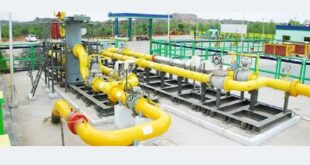The second phase of the National Supercomputing Mission (NSM) will be completed by September 2021, taking India’s total computational capacity to 16 Petaflops.
Important points:
- NSM was announced in 2015, with an aim to connect national academic and R&D institutions with a grid of more than 70 high-performance computing facilities at an estimated cost of Rs. 4,500 crores over the period of seven years by 2022.
- It supports the government’s vision of ‘Digital India’ and ‘Make in India’
- Implementation: NSM is jointly steered by the Ministry of Electronics and IT (MeitY) and Department of Science and Technology (DST – Ministry of Science and Technology) and implemented by the Centre for Development of Advanced Computing (C-DAC) Pune and the Indian Institute of Science (IISc), Bengaluru.
Features:
- It is also an effort to improve the number of supercomputers owned by India.
- These supercomputers will also be networked on the National Supercomputing grid over the National Knowledge Network (NKN). The NKN connects academic institutions and R&D labs over a high-speed network.
- Under NSM, the long-term plan is to build a strong base of 20,000 skilled persons over the next five years who will be equipped to handle the complexities of supercomputers.
- In the first phase, PARAM Shivay, PARAM Shakti, PARAM Brahma, PARAM Yukti and PARAM Sanganak were deployed at IIT (BHU), IIT Kharagpur, Indian Institute of Science Education and Research, Pune, and Jawaharlal Nehru Centre for Advanced Research.
- Recently, PARAM-Siddhi AI, has been ranked 63rd in the Top 500 list of most powerful supercomputers in the world. It was developed under the NSM.
Recent Development:
- In October 2020, C-DAC had inked MoUs with IITs along with IISc, National Agri-Food Biotechnology Institute and NIT, Tiruchirapalli — where a High Power Computing (HPC) system in each institute is currently being installed.
- So far, over 4,500 people have been trained in HPC and further training in Artificial Intelligence will be held at special NSM nodal centres established at four IITs — Kharagpur, Madras, Goa and Palakkad.
Challenges:
- The NSM envisages setting up a network of 70 high-performance computing facilities in the country but skewed funding for the mission during the initial years slowed down the overall pace of building supercomputers.
- Only 16.67% of the total budget of Rs. 4,500 crore, was utilised during the first four-and-a-half years for execution of the mission.
- Globally, China has the maximum number of supercomputers and maintains the top position in the world, followed by the US, Japan, France, Germany, Netherlands, Ireland and the United Kingdom.
SOURCE: THE HINDU ,THE ECONOMIC TIMES ,MINT
 Chinmaya IAS Academy – Current Affairs Chinmaya IAS Academy – Current Affairs
Chinmaya IAS Academy – Current Affairs Chinmaya IAS Academy – Current Affairs



